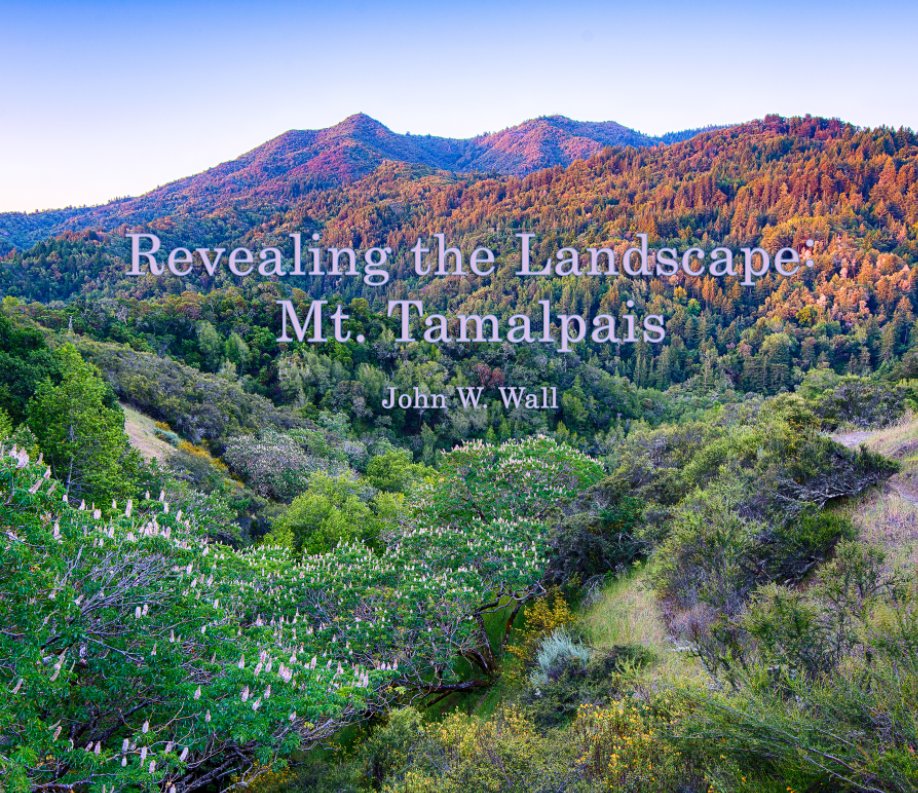* * *
 |
| Oak with Fog-filtered Sunlight |
It was still dark as I drove past Mountain Home Inn and began winding up through the forest toward Pantoll. The remnants of road flares at one of the bends in the road indicated there'd been an auto accident, or so I thought until I rounded the bend and had to swerve around a large slide of mud and small rocks that had poured all the way across the uphill lane. I was surprised the usual warning signs hadn't been posted but thought no more about it until I was about to go home several hours later and found the road closed at Pantoll.
At about 10 minutes before 7 a.m., I must have been the first car through the gate after the ranger who opened it up. I'd been hoping to arrive in time for what I thought would be a colorful sunrise. The sky had looked promising when I left San Francisco. I knew from a recent sunrise during the workweek that the color would happen around 7:10, so I sat in my car and waited for it. It was cold and windy outside. The appointed time for color came and went with nothing doing, so I continued up to Rock Spring.
 |
| Moss Sporangia and Hypogymnia Lichen |
I'd hoped to find the gate open early at Rock Spring so I could drive out to the parking area above Laurel Dell, but it was still shut, so I poked around the Benstein Trail.
It was still fairly dark on the forest floor, but this bright little panther amanita button was easy to spot.
It was also easy to spot this large, pristine fruiting of witch's butter (Tremella aurantia). I didn't have a ruler, but it was probably a good three inches across, maybe more. I tried to find something at hand to give a sense of scale and used a decaying oak leaf, but that didn't get the job done. Besides, who cares how big it is when the beauty of it is in those sinuous folds.
As it neared 9 a.m. I hung around closer to the gate so I'd be ready when it opened. Morning sunlight painted across the ridge, now through fog...
...and moments later with a little blue sky.
The gate opened and I drove out to the parking area above Laurel Dell, surprised to find a work truck already parked there, the buzzing sound of chainsaws rising from the dell. The water district has been thinning the forest all around that area, and it's surprising to see how much work they've done. Hiking down below Laurel Dell, the chainsaws were soon drowned out by the rushing creek.
I admired the big waterfall from behind the fence but decided not to photograph it this trip. Maybe next time. Although I was the first arrival from the top of the trail, it was already after 9 o'clock so I wasn't surprised to see a hiker already arriving from the bottom of the trail. What did surprise me was that the first hiker was followed by another and another, then many more, all African-Americans. They headed out the High Marsh Trail, perhaps to catch the Kent Trail and loop back to Cataract Creek via the Helen Markt Trail.
As attractive as the waterfalls were, I was actually more interested in the germinating buckeye seeds, especially when I saw how the shoot emerged from the root. You can see a bulge separating the descending root from the emerging leaves.
 |
| Physarum polycephalum |
I didn't find any other interesting fungi on my way back up the trail, but I did find this interesting slime mold plasmodium
on the prowl.
I'd hoped to find the season's first fetid adder's tongue flowers in a certain spot I know, and was not disappointed. The landscaping crew had called it quits for the day and walked past me as I was setting up my camera down low on the ground, asked if I was looking at a snake. "No," I said. "I'm looking at all these wildflowers." They nodded and pressed on, I assume without ever actually seeing the cryptic flowers. Also, although they are called "adder's tongue," the plant is unrelated to snakes. ;)
Back up on Bolinas Ridge I was surprised to encounter so few cars. Even Rock Spring was nearly empty. I'll bet the bicyclists were loving it. It was only when I got down to Pantoll and found the road closed that I understood what was going on. The only way to get to Rock Spring was via Stinson Beach, and that was also my only way out of there. Since I was forced to be in the neighborhood again, I checked out Morse Gulch and found it still flooded. Being at the very bottom of the mountain, I guess it could remain that way for some time, certainly more than a week.
* * *



























